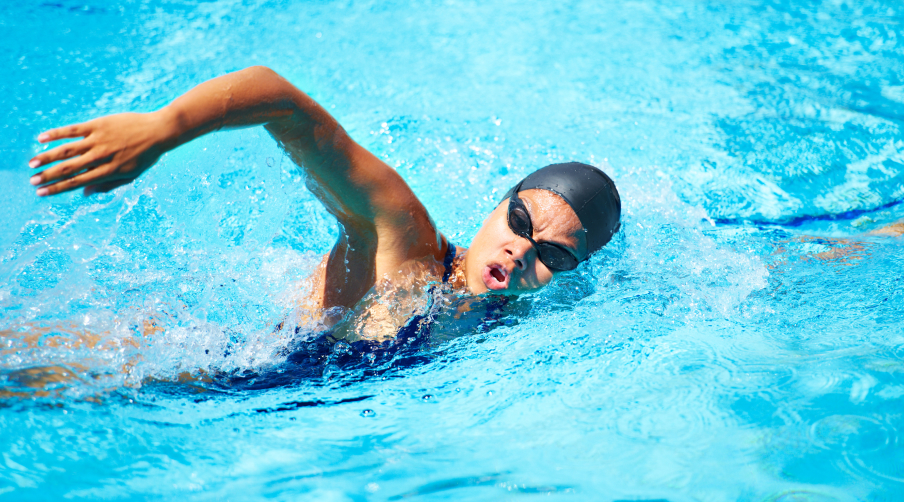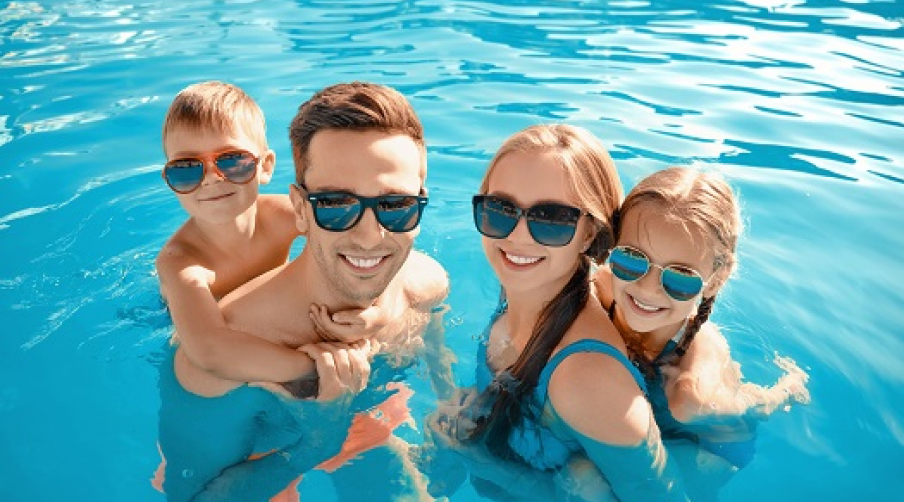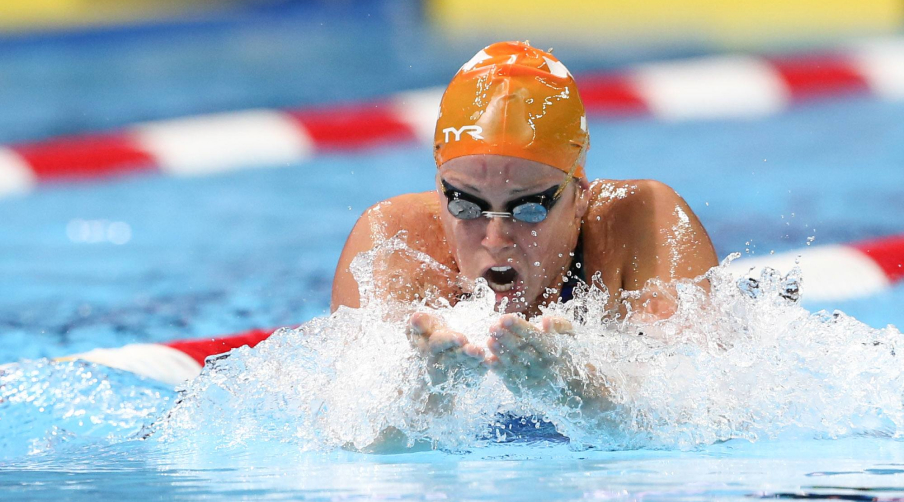
“Joe, how and why did you become a Total Immersion swim coach?”
This is one of the most common questions I get asked by athletes who come into the studio.
To answer that question we have to go back in time 16 years to when I first met Terry Laughlin, the founder of Total Immersion Swimming. That encounter had a profound impact not only on my swimming but also on my life and business. I had just started to participate in triathlons and I was in the top 10% of athletes out of the water but the energy cost was so high that my bike and run suffered tremendously. The next season, after I had met Terry and practiced the Total Immersion drills, I was swimming at the same pace for about 70-80% less energy. This new and improved efficiency allowed me to bike and run to my full ability, helping me to qualify and compete in the 70.3 Half Ironman World Championships three times.
Keep reading to see the story of how a plumber who wanted to complete a triathlon became a certified Total Immersion and USAT level II coach.
Discovering Total Immersion Swimming
In 2004 I contacted Terry Laughlin and asked him to help me become a better swimmer. As a budding triathlete who was able to swim somewhat fast I completed each swim purely based on power output. Unfortunately my bike and run performances were severely compromised by the energy I used finishing the swim. Terry suggested that I sign up for a “freestyle made easy clinic” in Queens NY that he was leading and it ended up changing the course of my life.
“You got it, you got it!”
-Terry Laughlin
During the 2nd day of the clinic we worked on a Total Immersion drill called (at that time) zipper switch. It is a drill that focused on bringing the recovery arm forward properly and the impact it has on balance and buoyancy (amongst other things). I had never felt so balanced, streamlined and in control of my body in the water before! I stood up in the pool shocked and excited. I heard Terry yelling “you got it, you got it” and I looked over my shoulder and saw he was on the pool deck leaning over pointing at me. I looked at Terry and said ”whatever I just got I need every time I swim!” At that moment I knew I was going to be a lifelong T.I. swimmer and the course was set to become a Total Immersion swim coach. After the weekend workshop I knew I wanted to help others learn how to have the same control of their body in the water by implementing the T.I. drills.
Why I Became a Total Immersion Swim Coach
Before attending the clinic with Terry, I read as many books on swimming as I could. I swam often and followed, to the best of my ability, what was outlined in each book; more kicking, more pulling, more yards. I didn’t question what was written as it made sense to me, work harder with my limbs to swim faster and further. If and when it didn’t work, I blamed myself for not having enough fitness and would add more swim days into my training.
“Terry challenged all of the principles that I swore by in the pool”
-Coach Joe
I began to think about my swimming differently. At first it was hard to accept, what I had been doing for years may not be the most effective way to swim. Before T.I. I believed what I was doing to be the best way to swim and had not explored other possibilities. It hadn’t occurred to me that doing land-based movements (which all of us are designed for) in an aquatic environment (which none of us are designed for) wouldn’t help me become the swimmer I wanted to be. My desire was to swim like a fish; fluid, comfortable, sneaky and fast. Except fish were missing something I thought was critically important for propulsion, arms and legs! I relied on limbs to swim but fish didn’t! That thought, that fish do not have arms and legs (they don’t kick or pull) forced me to reconsider everything I held to be true about moving through the water.
“The way that Terry thought about moving through the water ignited a passion inside of me that literally changed the course of my life”
-Coach Joe
I no longer wanted to blindly follow what I was taught as a kid in the pool. A few weeks after the swim clinic with Terry I reached out and told him I wanted to become a coach. Although I had just recently finished the “freestyle made easy clinic”, Terry allowed me to register for a coach training clinic.
How I Became a Total Immersion Swim Coach
I had the pleasure of being instructed directly by Terry Laughlin at the swim studio in New Paltz, NY. After I completed the coaching certification program, I interned in New Paltz one day a week for 6 months under the guidance of Terry. Terry not only taught me how to teach others, but how to teach in an endless pool while using above and below water video cameras. I ended up transitioning out of a 23 year plumbing and heating career into a 15 year (and counting) coaching career. Since that day when Terry was yelling “you got it, you got it” from the pool deck I’ve been on a quest to find new and better ways to do everything in my life.
“My time in New Paltz working as an intern under Terry’s guidance was invaluable”
-Coach Joe
Opening My Total Immersion Swim Studio in 2006
During this time, I opened a Total Immersion swim studio in Bay Shore NY serving swimmers and athletes in Nassau and Suffolk counties in Long Island along with NYC and the Tri-state area. Owning my own facility allows me to offer small group and private lessons that can be conducted anytime. The studio was designed to accelerate the learning process by having a two lane endless pool and multi-view above and below water video cameras. This approach focuses on empowering the athlete so they can leverage the T.I. drills and implement them into their own training. Once an athlete is coached in this type of setting they can continue to develop any swim stroke they desire; freestyle, breaststroke, butterfly, backstroke or combat swim/side stroke. Quality instruction combined with the use of the Total Immersion books, videos and training materials will yield even greater results.
“Being coached by Joe in the studio allowed me to surpass every swimming goal I had”
-Damian B. Div. I swimmer
After completing the “freestyle made easy clinic” with Terry and working on the drills, I was able to swim faster, easier and longer. When I became a T.I. coach, I was able to teach others how to develop and perfect their own stroke while getting the most out of their time in the pool.
As I continued to grow as a swim coach I also started to pursue triathlon coaching. Over a 2 year period I became a level 1 then a level 2 USAT triathlon coach. I added a triathlon training facility onto the swim studio and coaching became my full-time profession. The plumber who wanted to do a triathlon became a full-time coach, simply because he took a Total Immersion two day swim clinic.
Why do I believe Total Immersion is a superior swim training system?
By breaking down swimming into smaller pieces following an intelligently thought out process an athlete can take control of how they move in the water. The T.I. drills make learning any stroke possible and can be broken down into a few simple steps.
- Balance and Streamline
- Timing of movements
- Controlled and voluntary, instead of involuntary, movements
- Relaxed and proper breathing patterns
- Full body power development
“Swim drills help imprint individual parts of the stroke”
-Coach Joe
Specially designed sequences for all 5 swim strokes
All four of the competitive swim strokes (listed below) plus Combat swim (side) stroke can be mastered by almost anyone following the Total Immersion drill sequences.
- Freestyle
- Backstroke
- Breaststroke
- Butterfly
- Combat swim (side) stroke
“Most swimming drills fall into two categories, corrective or developmental”
-Coach Joe
Most swim drills are either developmental or corrective. Some athletes are developing all new patterns in the water and others are correcting what they already do. An experienced Total Immersion coach can assess and implement the correct drills and sequences for each swimmer. Focusing on the right drills at the right time will help minimize the chance of injury while maximizing speed, efficiency and control.
What are the benefits of private swim lessons?
EMPOWERED ATHLETES: Private lessons allow a level of attention that can not happen in a group setting. Taking control of the ”how” and “why” of your swim experience is the key to unlocking everything swimming can be. An educated athlete is an empowered athlete who determines where they want to take their swimming.
INCREASE BODY AWARENESS (self-coaching): By learning how to have total control of your body in the water an athlete can make adjustments on their own. Obtaining the ability to identify and correct movements while swimming leads to continual improvement (kaizen) and enjoyment in the water. The end goal of any private lesson is “self coaching”.
ELIMINATE TENSION: The tension that most swimmers experience can be reduced and eliminated when they learn to regain control of their body. Involuntary reactionary movements lead to tension and exhaustion. Voluntary thought out movements lead to control and comfort. Taking private lessons in a relaxed and controlled setting accelerate this process.
How (or where) you are taught makes all the difference
QUALITY COACHING: No two swimmers need the same exact instruction. An experienced coach can teach you how to implement the theories and techniques of T.I. Getting to work alongside a coach who only does private lessons elevates the learning process.
CONTROLLED SETTING: The endless pools adjustable current, warm shallow water, multi-angle video cameras and swim mirrors make it the perfect setting to develop your new skill set.
“When an athlete can make proper adjustments on their own it opens up a whole new world of swimming possibilities”
-Coach Joe
Long term benefits of swimming with control
SWIM EASIER, SWIM LONGER, SWIM FASTER: Most swimmers have only one speed or “gear” in the water. As they tire, a swimmer will lose speed and exhaustion sets in quickly. A relaxed swimmer who has control of their body can swim easier, longer, and faster. As the athlete you want to choose how hard or easy to swim. A swimmer who has control of their body can easily make this happen. Unfortunately a swimmer with no control has only one choice, swim hard, grunt it out, and hope for the best.
INCREASE FITNESS: All of this leads to having the skill set to determine the exertion level at which to swim, opening up the ability to build fitness. Easy swim days, moderate efforts, or harder swim sessions are all possible. This allows you to build fitness how you want, when you want, and on your own terms.
DECREASE INJURY: One of the greatest benefits of learning T.I. is it can lower your chance of injuries. Shoulder, back, neck and hip injuries are common in swimming. Learning how to develop “safe” patterns in the water lowers the chance of injury significantly. Since lessons are done privately we are able to identify movements that can lead to an injury and make adjustments. There are multiple factors besides stroke mechanics that can lead to an injury. Orthopedic limiters, mobility restrictions and previous injuries all need to be taken into account. A qualified coach can customize the stroke to work around any limiters an athlete may have.
Athletes and Swimmers Helped by Bay Shore Swim
All of the athletes who come into the studio have had their own unique and personal experiences in the water. Some people grew up spending time in the pool or ocean and enjoy the feeling of being in the water. Others swam competitively in their youth and even into their college years. Unfortunately, bad or uncomfortable experiences in the water are common for many people, leading to a very understandable fear or anxiety.
“One of my secret goals for everyone who comes into the studio is that they will love the water as much as I do”
– Coach Joe
Bay Shore Swim has taught the person who had a phobia of water how to swim with control, comfort and ease. We have also helped the competitive swimmer who was frustrated from putting in endless laps make gains they never thought were possible. Coach Joe has taught those who were only comfortable in the pool how to become just as comfortable in open water. Truly learning how to swim leads to a love of the water that is infectious and will last a lifetime.
Looking Ahead
For the last 15 years it has been my desire to help everyone experience the freedom of swimming with control. The enthusiasm that Terry had on the pool deck that day in Queens has stayed with me for all of these years. As a coach I personally get to experience what Terry did the day he said to me “you got it” every time a client “gets it” in a lesson. The joy that Total Immersion has brought into my life is something I plan on sharing for decades to come. If you would like to be one of the thousands of swimmers that have been coached, please contact the studio to start your journey.



